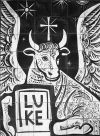
The Gospel of Luke
To be a Disciple: Lk 14,25-35
In verse 25, Luke widens the audience from the Pharisees to the crowd. There is continuity from the banquet parable which stresses God's generosity. On that basis, Jesus places his demands before the crowd, the response to that generosity. The size of the crowd is again stressed, but crowds are fickle.
Jesus' teaching on discipleship (Verse 26-27) follows with two short parables to illustrate the demands of being a disciple, building the tower (verses 28-30) and the king's army (verses 31-32).
A conclusion follows (verse 33) with the sayings about salt.
The refrain which unifies this passage is "cannot be my disciple": twice at the beginning (verses 26 & 27) and once at the end (verse 33)
"Hate" in verse 26 is strong language to be understood as giving absolute priority to the demands of being a disciple of Jesus rather than necessarily rejecting the family. The theme of the cross has been used before in this Gospel (9,23)
Building towers suggests the tower of Babel (Gen 11,4), though the parallel is not exact. The two illustrations indicate the imprtance of counting the cost before making the commitment.
Verse 33 then links the all embracing demands of Jesus to possessions, a point already made somewhat earlier (12,33-34). Once decided upon the commitment (verses 28-32), there can be no turning back even if that commitment costs everything.
Finally, the image of salt develops the point. I suggested checking the translations because the image is introduced by a "therefore" which is often dropped. Only Luke makes the comment about the dung heap - which again stresses the absolute demands of discipleship.
We can return to the main page.
